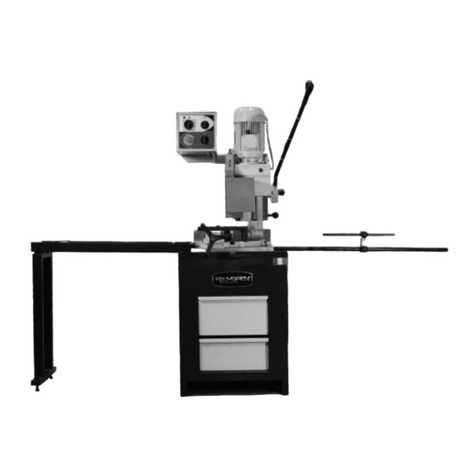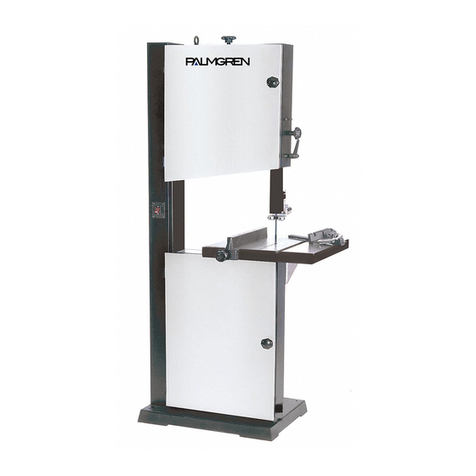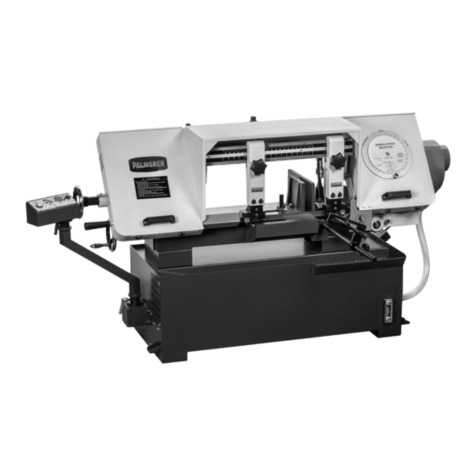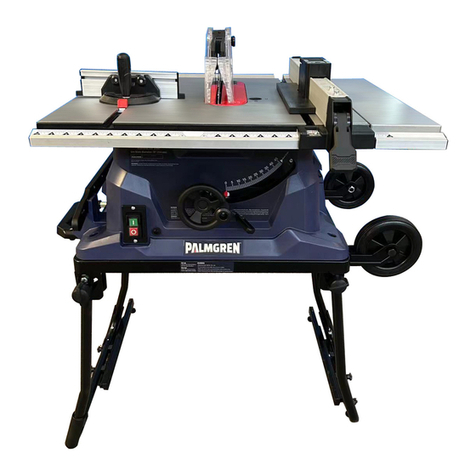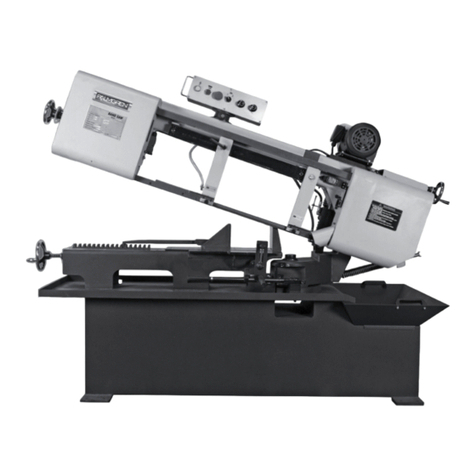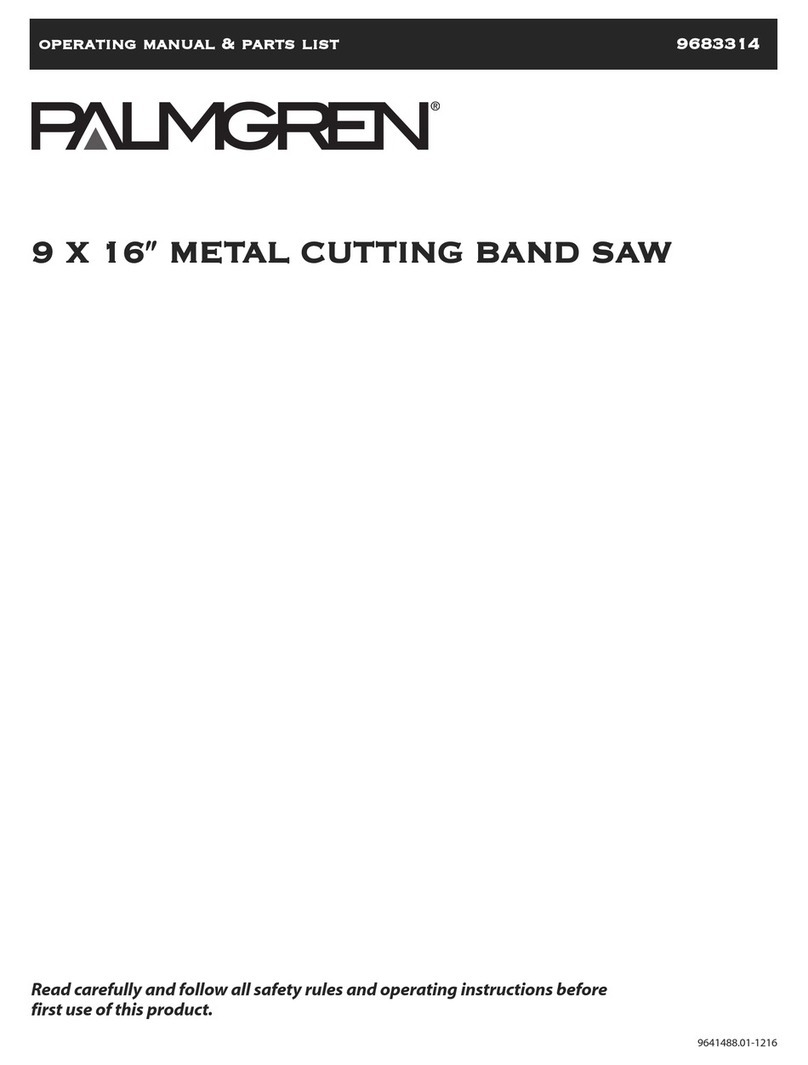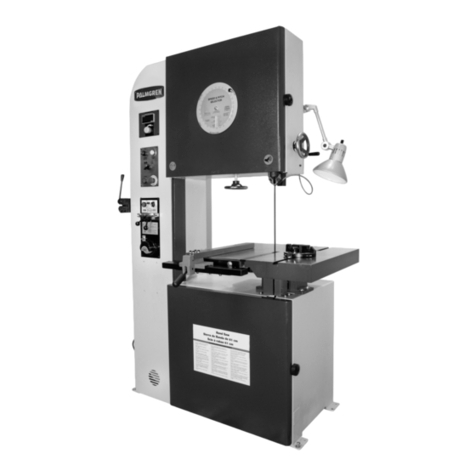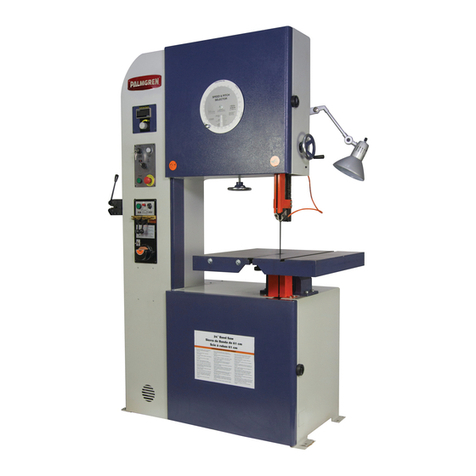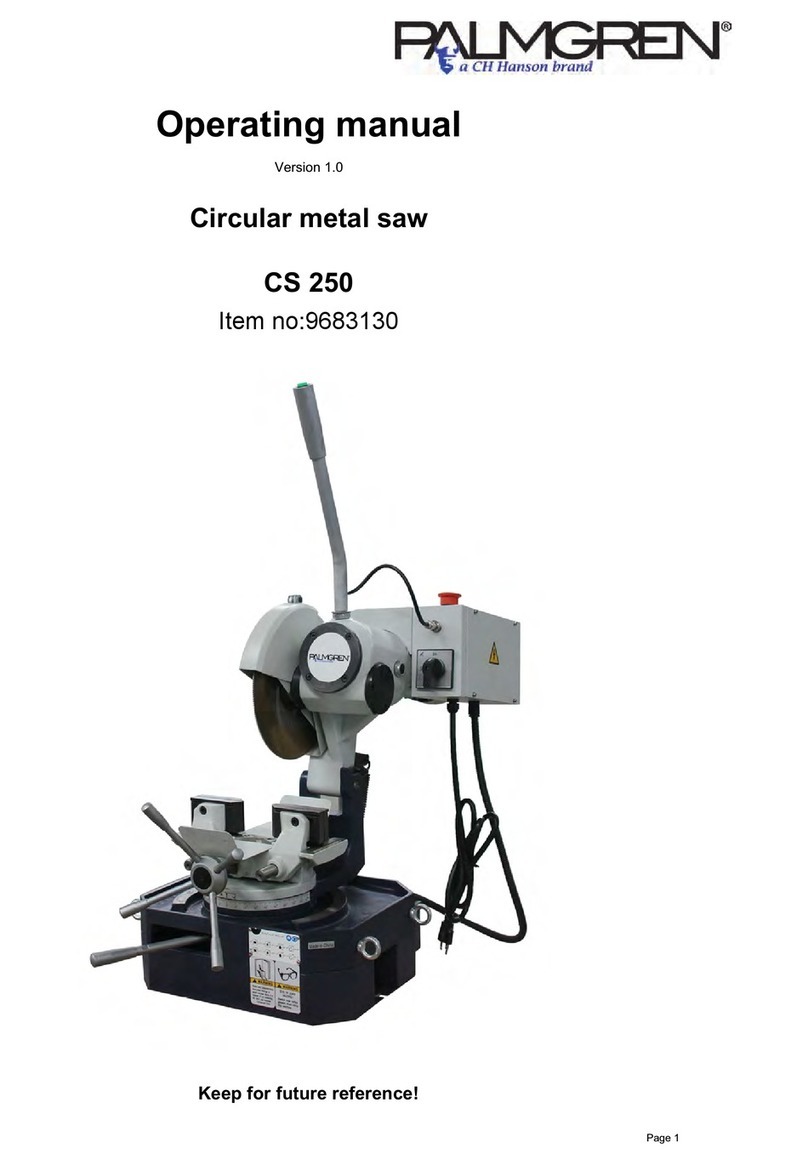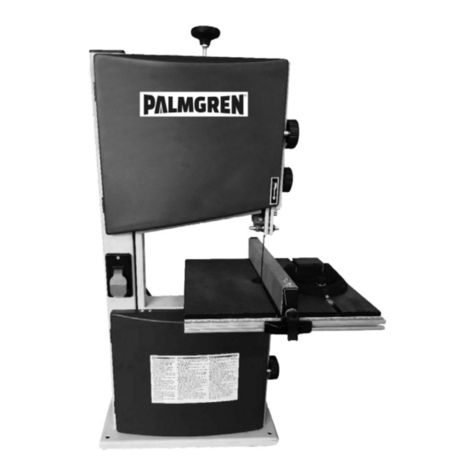
MAINTENANCE / REPAIR TROUBLESHOOTING OPERATION ASSEMBLY / INSTALLATION SAFETY / SPECIFICATIONS GETTING STARTED
4
SAFETY RULES (CONTINUED)
• Stay alert. Watch what you are doing, use common sense.
Do not operate any tool when you are tired.
• Guard against electrical shock. Prevent body contact with
grounded surface such as pipes, radiators, ranges and
refrigerator enclosures.
• Do not operate tool if under the influence of alcohol or drugs.
Read warning labels on prescriptions to determine if your
judgement or reflexes will be impaired. If there is any doubt,
do not operate the tool.
Preparing the work area for your job
• Keep work area clean and free of equipment, tools or other
objects. Cluttered areas invite injuries.
• Observe work area conditions. Do not use machines or
power tools in damp or wet locations. Do not expose to rain.
• Keep work areas well lighted. Do not use electrically powered
tools in the presence of flammable gases or liquids.
• Keep children away. Children must never be allowed in
the work area. Do not let them handle machines, tools or
extension cords.
• All internal operations, maintenance, or repairs must be
performed in a well-lit area
Maintaining your tool
• Maintain this machine with care. Use a clean sharp cutting
blade for better and safer performance. Follow instructions
for lubricating and changing accessories. Inspect the power
supply cables periodically and if damaged, have them
repaired by an authorized technician.
• The machine must be completely disconnected from
its power source before any maintenance or service is
performed. Follow OSHA lock-out, tag-out procedures to
prevent accidental machine starts.
• Immediately replace any damaged or obscured warning
labels that are attached to the machine.
• Replacement parts and accessories. When servicing, use
only identical replacement parts. Use of any other parts will
void the warranty. Only use accessories intended for use with
this tool. Approved accessories are available from your local
retailer.
• Maintenance. For your safety, service and maintenance
should be performed by a qualified technician.
Know how to use your tool
• The blade must not move when the saw frame is in
suspended mode (or raised).
• Only the blade section used for cutting can be exposed. Use
the blade guides to adjust the blade guards.
• Never use the machine without its guards in place and
working properly.
• Never put your hands or arms near the cutting area while the
machine is operating.
• Do not move the machine while it is cutting.
• Keep the area free of equipment, tools, or any other objects.
• Perform only one operation at a time.
• Never have several objects in your hands at the same time.
• Keep your hands as clean as possible.
• Do not force tool. It will do the job better and more safely at
the rate for which it was intended. Do not use inappropriate
attachments in an attempt to exceed the tool capacity.
• Use the right tool for the job. Do not attempt to force a small
tool or attachment to do the work of a large industrial tool.
There are certain applications for which this tool was
designed. Do not modify this tool and do not use this tool for
a purpose for which it was not intended.
• Do not overreach. Keep proper footing and balance at
all times. Do not reach over or across machines while in
operation.
• Remove adjusting keys and wrenches. Check that keys and
adjusting wrenches are removed from the tool or machine
work surface before attaching it to a power supply.
• Avoid unintentional starting. Be sure the switch is in the OFF
position when not in use and before attaching the machine to
a power supply.
• Check for damaged parts. Before using any tool, any
part that appears damaged should be carefully checked
to determine that it will operate properly and perform its
intended function.
• Check for alignment and binding of moving parts; any broken
parts or mounting pieces should be properly repaired or
replaced by a qualified technician. Do not use the tool if any
switch does not turn ON and OFF properly.
The warnings, cautions and instructions
discussed in this instruction manual
cannot cover all possible conditions and situations that may
occur. It must be understood by the operator that common
sense and caution are factors which cannot be built into this
product, but must be supplied by the operator.
SPECIFICATIONS
Model 9684486 - 10” Fully Automatic Band Saw
Main Motor 3 HP
Hydraulic Motor 1 HP
Coolant Motor 1/6 HP
Cutting Capacity Rectangle 9-13/16" x 11-13/16"
Cutting Capacity Round 9-13/16
Blade Length 138.2"
Blade Width 1"
Blade Thickness 0.035"
Blade Speed 65.61 - 262.47 FPM
Hydraulic Tank (gal.) 7.92
Coolant Tank (gal.) 10.56
Allowable Loading Capacity
(lbs.)
3,305
Roller Stand Loading Capacity
(lbs.)
4,410

